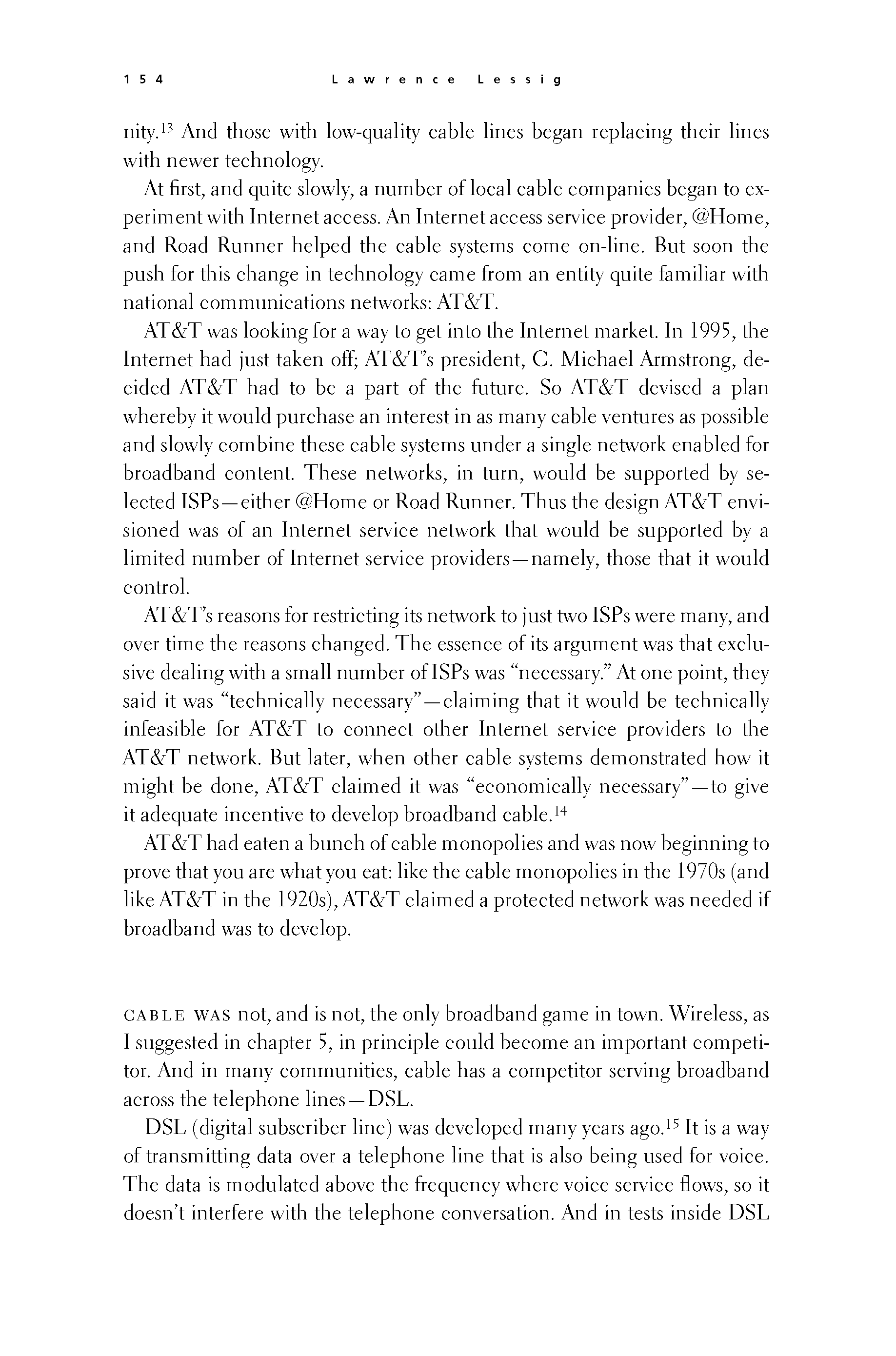 p153 _
-chap- _
toc-1 _
p154w _
toc-2 _
+chap+ _
p155
p153 _
-chap- _
toc-1 _
p154w _
toc-2 _
+chap+ _
p155
nity.[10-13] And those with low-quality cable lines began replacing their lines
with newer technology.
At first, and quite slowly, a number of local cable companies began to ex-
periment with Internet access. An Internet access service provider, @Home,
and Road Runner helped the cable systems come on-line. But soon the
push for this change in technology came from an entity quite familiar with
national communications networks: AT&T.
AT&T was looking for a way to get into the Internet market. In 1995, the
Internet had just taken off; AT&T's president, C. Michael Armstrong, de-
cided AT&T had to be a part of the future. So AT&T devised a plan
whereby it would purchase an interest in as many cable ventures as possible
and slowly combine these cable systems under a single network enabled for
broadband content. These networks, in turn, would be supported by se-
lected ISPs -- either @Home or Road Runner. Thus the design AT&T envi-
sioned was of an Internet service network that would be supported by a
limited number of Internet service providers -- namely, those that it would
control.
AT&T's reasons for restricting its network to just two ISPs were many, and
over time the reasons changed. The essence of its argument was that exclu-
sive dealing with a small number of ISPs was "necessary." At one point, they
said it was "technically necessary" -- claiming that it would be technically
infeasible for AT&T to connect other Internet service providers to the
AT&T network. But later, when other cable systems demonstrated how it
might be done, AT&T claimed it was "economically necessary" -- to give
it adequate incentive to develop broadband cable.[10-14]
AT&T had eaten a bunch of cable monopolies and was now beginning to
prove that you are what you eat: like the cable monopolies in the 1970s (and
like AT&T in the 1920s), AT&T claimed a protected network was needed if
broadband was to develop.
///\\\
Cable was not, and is not, the only broadband game in town. Wireless, as
I suggested in chapter 5, in principle could become an important competi-
tor. And in many communities, cable has a competitor serving broadband
across the telephone lines -- DSL.
DSL (digital subscriber line) was developed many years ago.[10-15] It is a way
of transmitting data over a telephone line that is also being used for voice.
The data is modulated above the frequency where voice service flows, so it
doesn't interfere with the telephone conversation. And in tests inside DSL
[[154]]
p153 _
-chap- _
toc-1 _
p154w _
toc-2 _
+chap+ _
p155